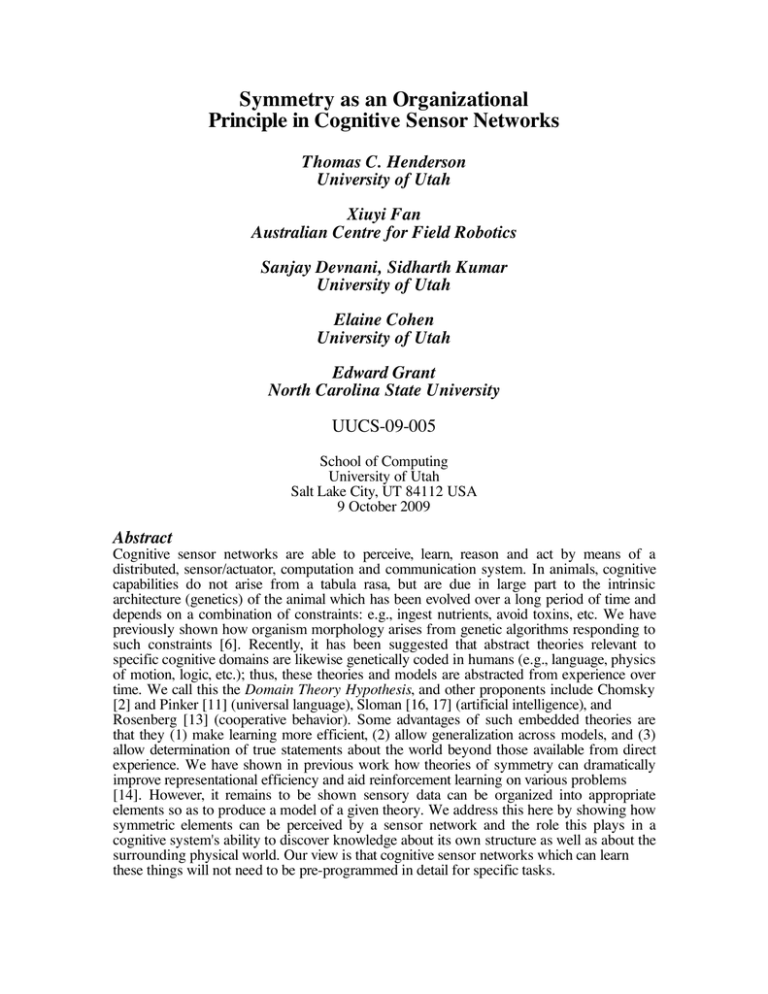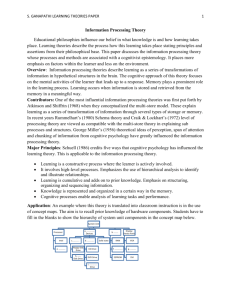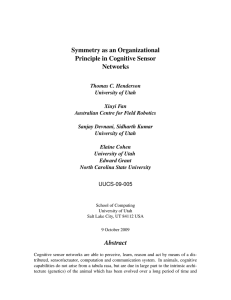Symmetry as an Organizational Principle in Cognitive Sensor Networks
advertisement

Symmetry as an Organizational Principle in Cognitive Sensor Networks Thomas C. Henderson University of Utah Xiuyi Fan Australian Centre for Field Robotics Sanjay Devnani, Sidharth Kumar University of Utah Elaine Cohen University of Utah Edward Grant North Carolina State University UUCS-09-005 School of Computing University of Utah Salt Lake City, UT 84112 USA 9 October 2009 Abstract Cognitive sensor networks are able to perceive, learn, reason and act by means of a distributed, sensor/actuator, computation and communication system. In animals, cognitive capabilities do not arise from a tabula rasa, but are due in large part to the intrinsic architecture (genetics) of the animal which has been evolved over a long period of time and depends on a combination of constraints: e.g., ingest nutrients, avoid toxins, etc. We have previously shown how organism morphology arises from genetic algorithms responding to such constraints [6]. Recently, it has been suggested that abstract theories relevant to specific cognitive domains are likewise genetically coded in humans (e.g., language, physics of motion, logic, etc.); thus, these theories and models are abstracted from experience over time. We call this the Domain Theory Hypothesis, and other proponents include Chomsky [2] and Pinker [11] (universal language), Sloman [16, 17] (artificial intelligence), and Rosenberg [13] (cooperative behavior). Some advantages of such embedded theories are that they (1) make learning more efficient, (2) allow generalization across models, and (3) allow determination of true statements about the world beyond those available from direct experience. We have shown in previous work how theories of symmetry can dramatically improve representational efficiency and aid reinforcement learning on various problems [14]. However, it remains to be shown sensory data can be organized into appropriate elements so as to produce a model of a given theory. We address this here by showing how symmetric elements can be perceived by a sensor network and the role this plays in a cognitive system's ability to discover knowledge about its own structure as well as about the surrounding physical world. Our view is that cognitive sensor networks which can learn these things will not need to be pre-programmed in detail for specific tasks.







